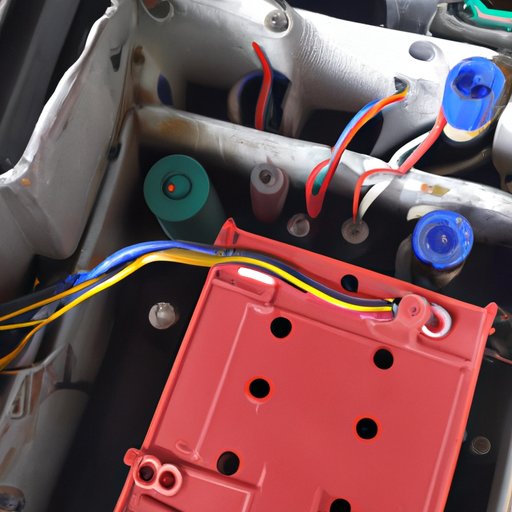Introduction
Starter relays are an important component of any vehicle. They help control the electrical current that is sent to the starter motor, which helps the engine start up. If the starter relay is not working properly, then the engine may not be able to start or may start with difficulty. Knowing how to check starter relay is essential to ensure your vehicle is running smoothly.
Definition of Starter Relay
A starter relay is an electrical switch that allows the battery to send power to the starter motor. When the ignition switch is turned on, the starter relay will close the circuit and allow electricity to flow to the starter motor. This will cause the starter motor to engage, turning the engine over and starting the vehicle. Without a functioning starter relay, the engine will not start.

Overview of Symptoms of a Faulty Starter Relay
If the starter relay is faulty, there are several symptoms that can indicate this. These include the engine not starting when the ignition switch is turned on, the engine taking longer than usual to start, or the starter motor making strange noises or clicking when the ignition switch is turned on. If any of these symptoms are present, it is likely that the starter relay needs to be checked.

How to Check the Starter Relay
In order to check the starter relay, there are several steps that must be followed. Below is a step-by-step guide on how to check starter relay.
Consult the Vehicle’s User Manual
The first step in checking the starter relay is to consult the vehicle’s user manual. This will provide information on the location of the starter relay, as well as detailed instructions on how to access and test it. Referring to the user manual will make the process easier and less time consuming.
Inspect the Starter Relay for Visual Damage
Once the starter relay has been located, it should be inspected for any signs of damage. This includes cracks, corrosion, or other signs of wear and tear. If any damage is found, the starter relay should be replaced as soon as possible.

Test the Voltage Output of the Starter Relay
The voltage output of the starter relay should be tested using a voltmeter. This will help determine if the starter relay is sending the correct amount of voltage to the starter motor. If the voltage output is too low, it could indicate that the starter relay is faulty.

Check the Connectors and Wiring
The connectors and wiring leading to the starter relay should also be checked for any signs of damage or corrosion. If any of the connectors or wiring are damaged, they should be replaced as soon as possible.
Listen for Unusual Noises from the Starter Relay
When the starter relay is engaged, it should make a faint clicking noise. If any unusual noises are heard, such as buzzing or grinding, it could indicate that the starter relay is faulty and needs to be replaced.
Perform a Multimeter Test
A multimeter test can also be performed to check the starter relay. This involves placing the probes of the multimeter on the terminals of the starter relay and measuring the voltage output. The voltage should be within a certain range, depending on the type of vehicle. If the voltage output is outside of this range, it could indicate that the starter relay is faulty and needs to be replaced.
Replace the Starter Relay if Necessary
If any of the above tests indicate that the starter relay is faulty, then it should be replaced as soon as possible. This can usually be done fairly easily, but it is best to refer to the vehicle’s user manual for specific instructions on how to replace the starter relay.
Conclusion
Knowing how to check starter relay is essential for ensuring that your vehicle is running smoothly. By following the steps outlined in this guide, you can quickly and easily check the starter relay to see if it is functioning properly. If any issues are found, it is best to replace the starter relay as soon as possible.
(Note: Is this article not meeting your expectations? Do you have knowledge or insights to share? Unlock new opportunities and expand your reach by joining our authors team. Click Registration to join us and share your expertise with our readers.)
